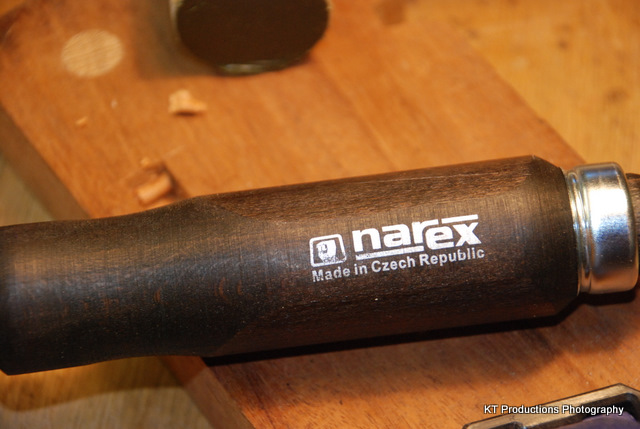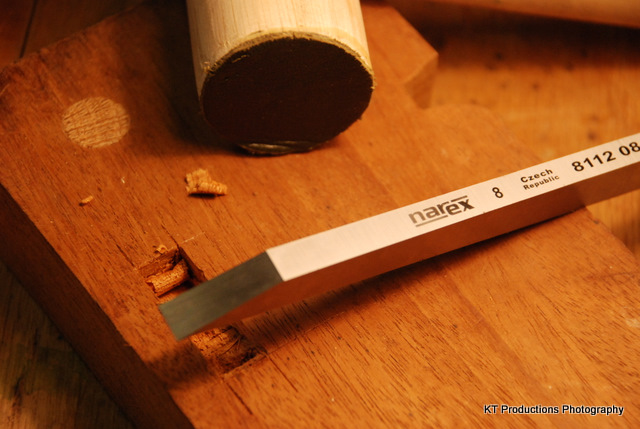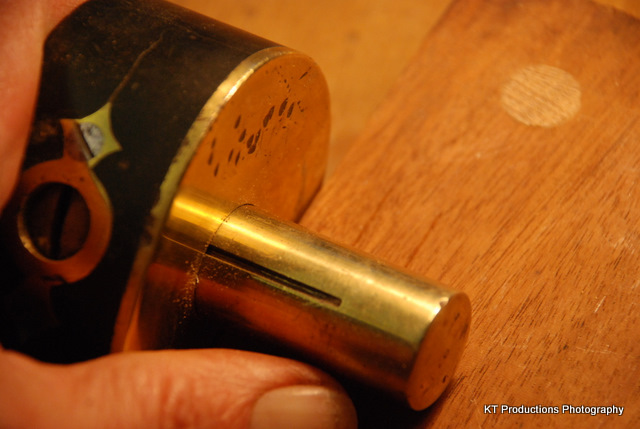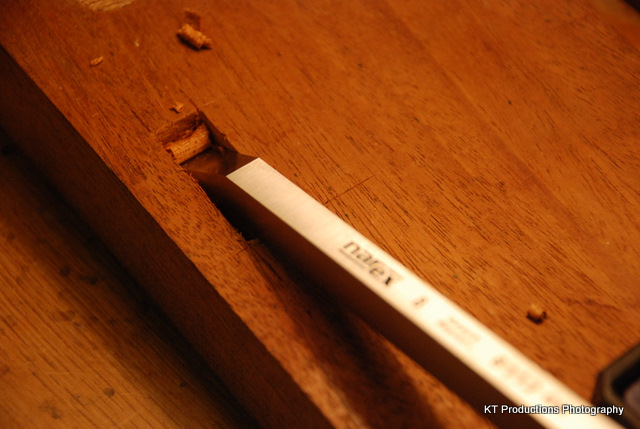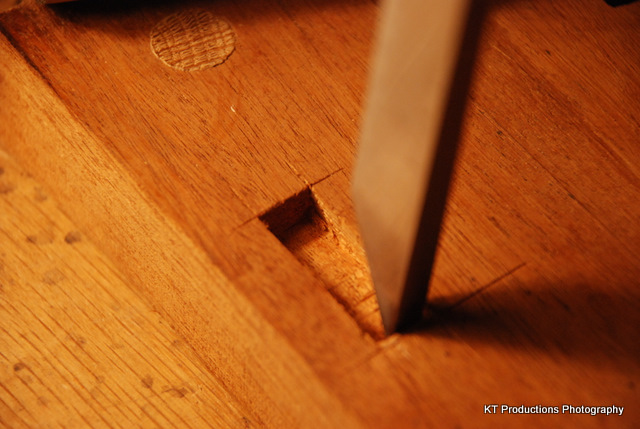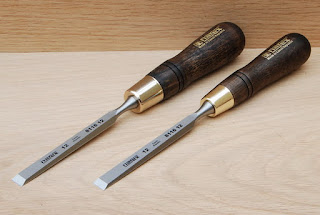LuptonM
Established Member
Firstly I have no idea how to cut mortices but I bought these with the intention to learn how to. (my mum wants me to make her a table!!!!!- cheeky bugger :lol: )
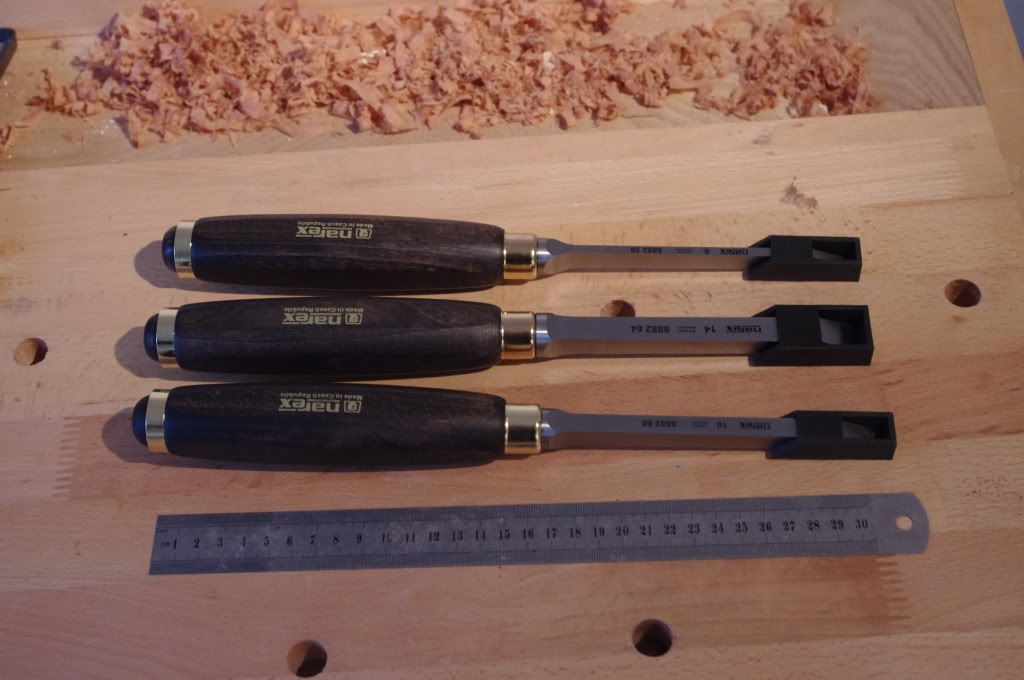
The three here are 6mm, 10mm and 14mm- the 14mm will probably be used for large items such as very sturdy tables
One thing that I noticed straight out of the box is that they are HUGE!!!!!
The chisels come cleanly ground and are ready for honing- possibly the bottom is slightly concave- not sure if this is necessary for mortice chisels though
Anyway I've taken some measurements here to show their actual sizes (measured the widest point-the bottom surface)- it was a little tricky since they are slightly trapezoid
The 10mm chisel
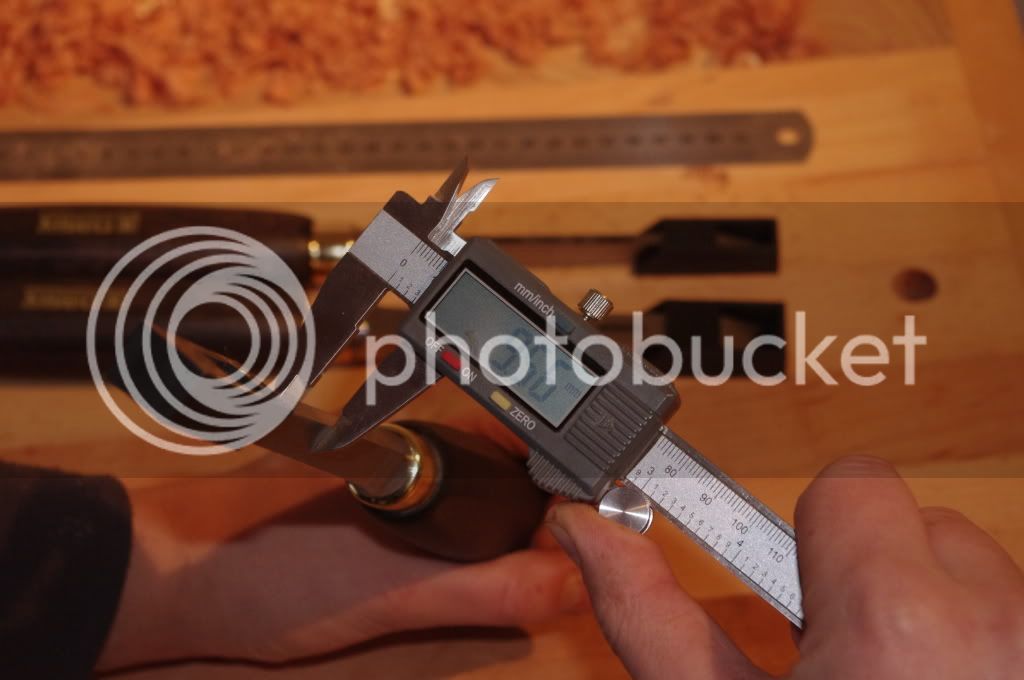
The 14mm chisel
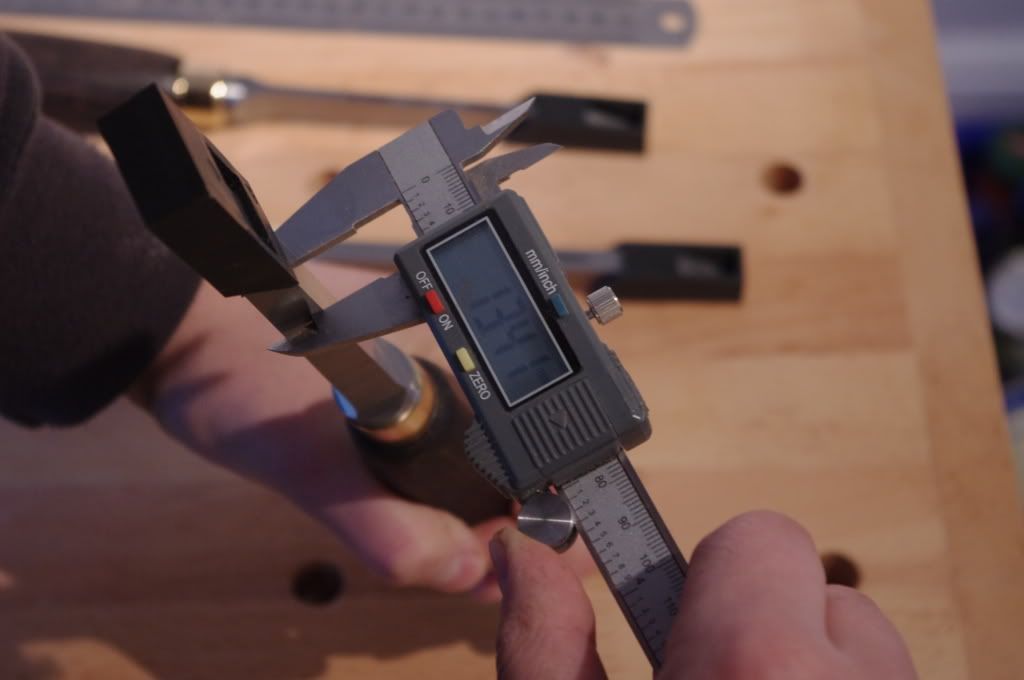
The 6mm chisel with normal callipers
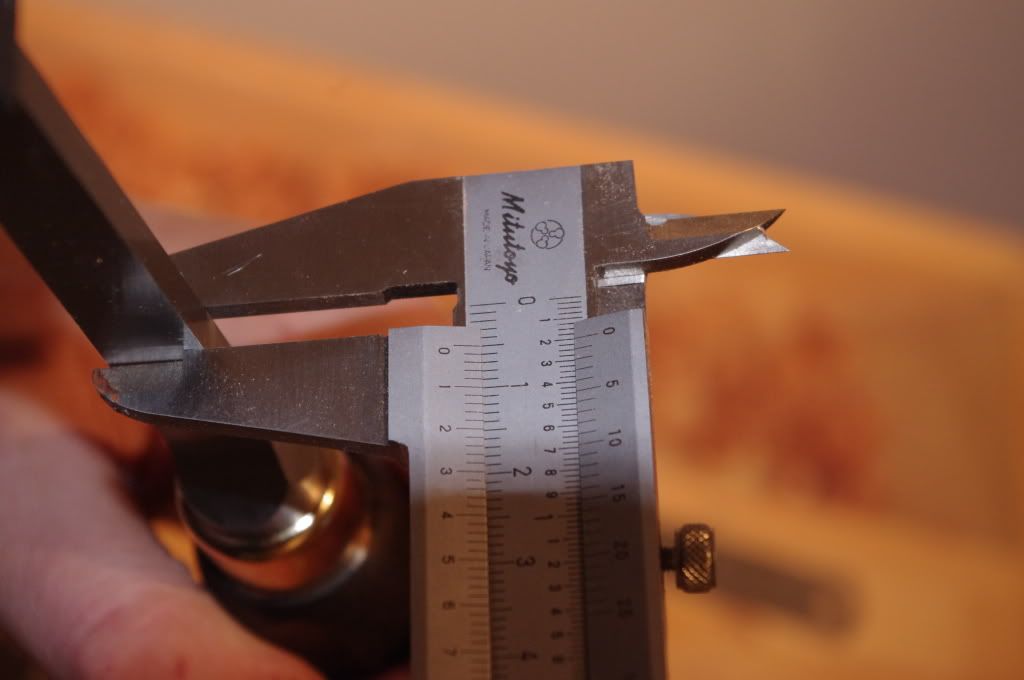
I would have seem to have lost the image where I measured the 6mm chisel with digital callipers- it was about 5.2mm-5.3mm if I remember- I used the analogue callipers to show that my digital one was not out of sync in case ppl wanted to raise the fact that the 6mm chisels is surprisingly smaller than stated
Another thing I noticed about them is that they don't seem very heavy- I would have thought that mortice chisels should be blade heavy but these do not seem so. Personally I am not keen on the handles and think that they are too long and I am not sure on the shape either- however don't take this a gospel since I am not experienced in hand mortising
I think that these are the cheapest mortice chisels on the market currently- roughly £14 each. The other takings are probably more than double in price
I might attempt some-when to try them out properly (me banging away indoors scares the dogs so I'll have to find somewhere appropriate outside). This will also lead me onto another mini review of the Veritas marking gauge and mortice attachment. You will also be able to laugh at my mortice attempt as well- either that or it'll make you feel better about yourself

The three here are 6mm, 10mm and 14mm- the 14mm will probably be used for large items such as very sturdy tables
One thing that I noticed straight out of the box is that they are HUGE!!!!!
The chisels come cleanly ground and are ready for honing- possibly the bottom is slightly concave- not sure if this is necessary for mortice chisels though
Anyway I've taken some measurements here to show their actual sizes (measured the widest point-the bottom surface)- it was a little tricky since they are slightly trapezoid
The 10mm chisel

The 14mm chisel

The 6mm chisel with normal callipers

I would have seem to have lost the image where I measured the 6mm chisel with digital callipers- it was about 5.2mm-5.3mm if I remember- I used the analogue callipers to show that my digital one was not out of sync in case ppl wanted to raise the fact that the 6mm chisels is surprisingly smaller than stated
Another thing I noticed about them is that they don't seem very heavy- I would have thought that mortice chisels should be blade heavy but these do not seem so. Personally I am not keen on the handles and think that they are too long and I am not sure on the shape either- however don't take this a gospel since I am not experienced in hand mortising
I think that these are the cheapest mortice chisels on the market currently- roughly £14 each. The other takings are probably more than double in price
I might attempt some-when to try them out properly (me banging away indoors scares the dogs so I'll have to find somewhere appropriate outside). This will also lead me onto another mini review of the Veritas marking gauge and mortice attachment. You will also be able to laugh at my mortice attempt as well- either that or it'll make you feel better about yourself



